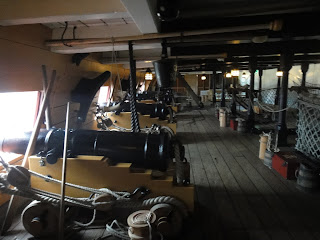After cruising instructor I waited in London for a several days to hear back from two potential employers. Would have sucked to get home and then have to fly right back for an interview. In the end neither interview happened, but I did enjoy some more touristing.
I stayed in a cheep hostel in Greenwich. One day I took the train into London and did a tour on a aquatic bus that was pretty cool. Had a look around London and decided what else I wanted to see. Here's a video:
Next I spent the day in Greenwich. I spent the morning at the Royal Observatory. That is the place where the beginnings of modern navigation were developed. The observatory has the survey equipment that was used to establish the Greenwich meridian. This is the East / West point of devision. All Latitude measurements are distances in degrees from this line. I got the obligatory photo of my feet on the line, and then went down into the museum of time keeping. This is important to navigation because if you take a sun site at exactly the same time of day, you can calculate your distance east of west from your start point. It was a very difficult problem to develop a time piece that would stay accurate on a moving ship. Most timepieces used a pendulum action that measured out the seconds. If the length of the stroke changed with the ships movement then the time would be off. Initially this error was hundreds of miles, but a brilliant man called Harison spent his life working on the problem and on his 4th attempt he built a small timepiece the size of a book that was accurate to about a mile. Initially the British government, didn't pay for his work, and it took quite a battle to get them to change their mind. He eventually got an audience with the king, who supported his case and dealt with him honourably. Here's a BBC show about the chronometer:
And also some pictures of the Royal Observatory and the time piece.
The last thing I did in Greenwich was to visit the Cutty Sark. "Cutty Sark" is the fastest tea clipper ever. She spent he life in the tea trade, and then near the end of the age of sail she carried wool from Australia to London. She ran with a crew of 20 officers and men and spent her life plying the sea. Unlike the historic ships I visited "Cuty Sark" went directly from being a working ship to being purchased and preserved. She is sitting on the hard with a structure build around her. She has elevator service to all decks, so she is accessible to all. And for the last time, here's some pics:






























































